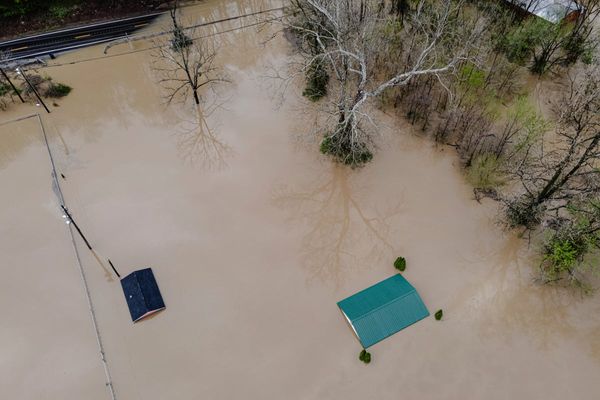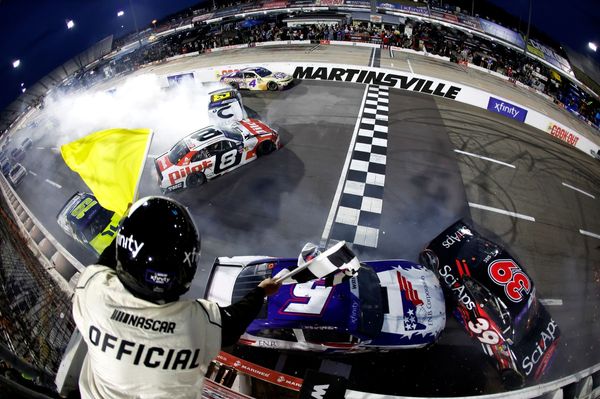The hearse carrying Queen Elizabeth II's coffin has left Balmoral Castle, beginning a multi-day journey back to England.
The royal family has released details of the plan for the Queen's funeral, and it's full of tradition, protocol and logistics.
The plan for the Queen's death is code-named Operation London Bridge, but another plan called Operation Unicorn is taking place to transport her body from Balmoral Castle in Scotland.
Over the next 10 days, we will see the carefully choreographed plans swing into action.
A timeline of Operation Unicorn, and what comes next
September 8: Queen Elizabeth II dies at Balmoral
The Queen died at Balmoral Castle in north-east Scotland. It was her summer home and one of her favourite places.
Her coffin rested within the ballroom of the castle.
September 11: The Queen's body leaves Balmoral
The Queen's coffin has been driven to Edinburgh, and been placed in the throne room of the Palace of Holyroodhouse.
The cortege left Balmoral at 7pm AEST Sunday (10am local time) travelled through north-east Scotland with three main stops for dignitaries and the public to pay their respects.
The hearse first travelled east to nearby village Ballater, for a tribute attended by the Lord Lieutenants and senior dignitaries of Aberdeenshire.
The procession next arrived in the port city of Aberdeen about 9pm for another formal tribute.
It then travelled south to Dundee, arriving about 11.20pm.
After driving through Dundee's north, where the public stood along the Kingsway road to pay their respects, the cortege finally arrived in Edinburgh at 1.30am.
September 12: The Queen's body is taken to St Giles' Cathedral
On Monday afternoon a procession will take the Queen's coffin from the Palace of Holyroodhouse to St Giles' Cathedral.
King Charles III and members of the royal family will take part in the procession, as well as a service at St Giles' to receive the coffin.
After the service, the people of Scotland will have the opportunity to come and pay their respects.
September 13: The Queen's coffin arrives in England
On Tuesday afternoon the Queen's coffin will fly from Edinburgh Airport on a Royal Air Force aircraft to RAF Northolt that evening.
The Queen's daughter, Princess Anne, will travel on the flight with her mother's coffin.
From Northolt, the coffin will be driven to Buckingham Palace to rest in the Bow Room.
September 14: The Queen's coffin arrives in Westminster
On Wednesday afternoon, a procession with the King's Troop, Royal Horse Artillery, will take the coffin from Buckingham Palace to Westminster Hall.
The procession will pass The Mall, Horse Guards, Whitehall, Parliament Square and New Palace Yard before it arrives at Westminster Hall.
Once at Westminster, a service will be held by the Archbishop of Canterbury and the King and members of the royal family will attend.
The Queen's body will lie in state in Westminster Hall — where members of the public will be able to visit — for four days until the morning of the state funeral.
September 19: The Queen's funeral takes place
At 11am on Monday, September 19, the Queen's body will be taken from the Palace of Westminster to Westminster Abbey for the state funeral.
The Abbey is where the Queen had her coronation, and where she married Prince Philip.
The Queen's body will then be taken to St George's Chapel at Windsor Castle where she will be buried next to her husband, Prince Philip.
The pair will join the Queen's parents, King George VI and the Queen Mother, as well as the Queen's sister Princess Margaret.
Where are royal family members right now?
Earlier, King Charles and the Queen Consort were at St James's Palace in London where he was officially proclaimed as King.
His proclamation was witnessed by dignitaries and his son, Prince William.
The Queen's other three children — Anne, Edward and Andrew — and their families were still at Balmoral.
The group attended a short church service before walking back up to the gates of Balmoral Castle, thanking people who had gathered.
Prince Andrew's appearance was notable because he had been largely excluded from royal duties after allegations of sexual assault.
Princes William and Harry, and their wives Catherine and Meghan, were earlier at Windsor Castle where they made a joint appearance to greet people at the gates.







